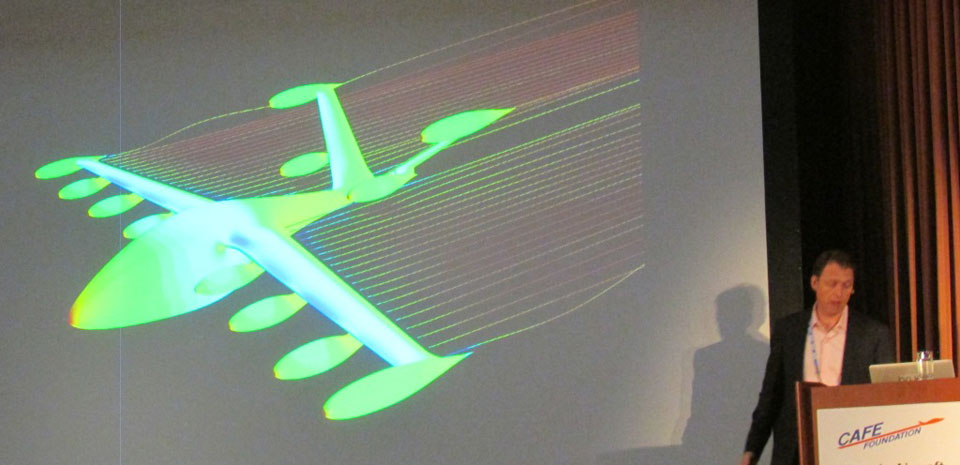Electric Power Advances Presented at EAS
by Murry Rozansky, EAA 48039
May 7, 2015 - After nine years of electric aircraft gatherings such as the one that took place May 1-2 in Santa Rosa, California, one might think we would be hearing about all kinds of new electric flying machines ushering in a new golden age of aviation. Well, that hasn’t happened - yet.
Rather, the CAFE Foundation’s Electric Aircraft Symposium (EAS) IX provided a comprehensive status report on the state-of-the-art in electric flight. The extensive offerings on Friday, May 1, included 20 presentations with four taking place at three theme dinners. Saturday featured 10 presentations and an early afternoon close as many dedicated EAAers mixed with PhDs and industry attendees.
As battery development is still the weak link in electric propulsion, several presentations explored various platforms. For example, attendees got a glimpse of the difficulties in perfecting the lithium-based batteries. One presentation looked at the investigation into the Boeing 787 battery fires. Others explored even more advanced material systems.
There were presentations on electric powered aircraft still on the drawing board as well as several (mostly manned) that are already flying. CAFE Foundation’s Dr. Brien Seeley presented his vision of quiet, electric autonomous two-place vertical or short takeoff and landing (V/STOL) aircraft that can operate from neighborhood mini airparks, which could become robot air taxis. He proposed a contest like the Green Flight Challenge to encourage the development of V/STOL aircraft.
An area where electric aircraft can make a positive impact on costs is in basic flight training, and several example projects were presented. Dr. Tine Tomazic of Pipistrel described his company’s WATTsUP, a two-seat electric powered training aircraft with an hour’s worth of flight capacity (30 minute reserve).
When companies such as Airbus plan to build electric two- and four-seat aircraft and Siemans is making aircraft electric motors, electric flight is going to happen.
For more information visit the CAFE Foundation website, and look for more EAS coverage in the July issue of EAA Sport Aviation.

